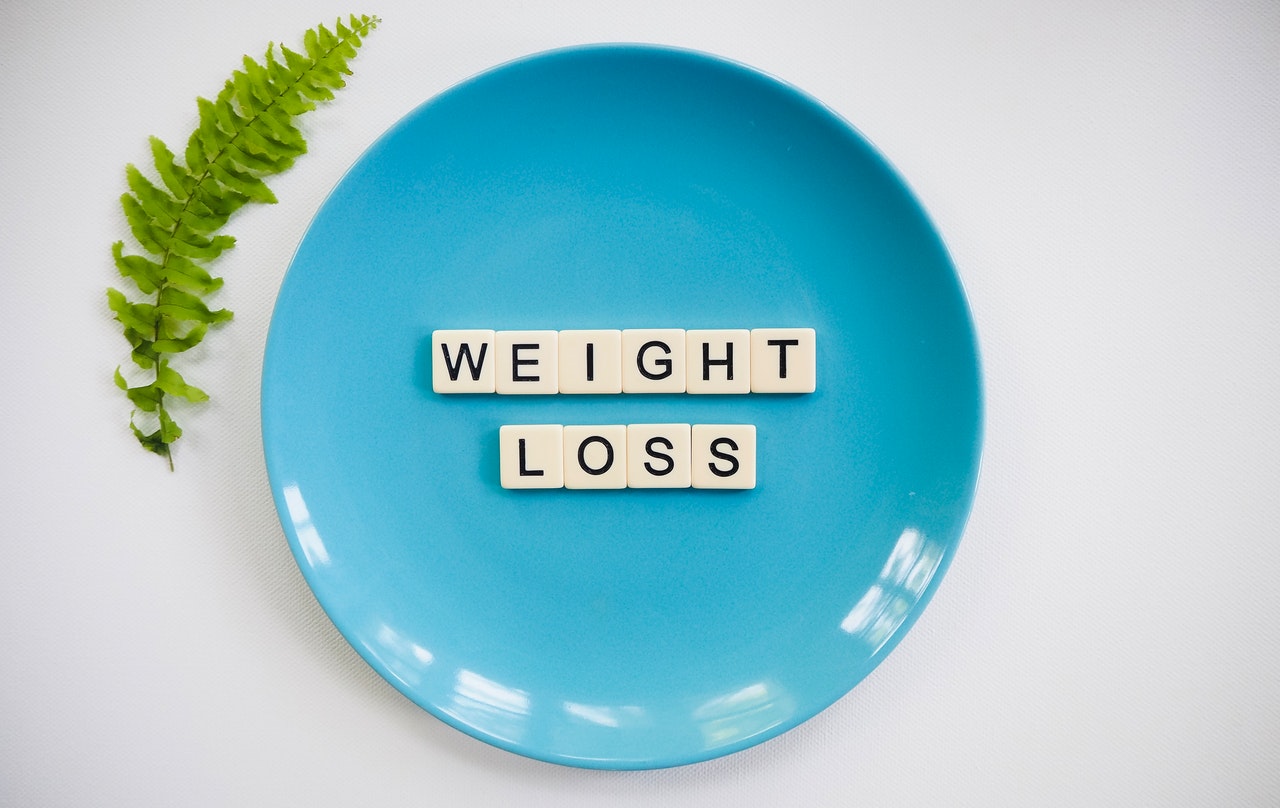Health
Speed Keto Might Be The Answer To All Your Weight Loss Questions

By now you have probably heard of the Keto Diet. This way of eating has gained a significant amount of popularity in today’s world due to its positive results in burning unwanted fat, controlling blood sugar levels, and boosting your energy.
With it being a renowned nutrition topic, variations of ketogenic diet from vegetarian to Mediterranean keto are continuously trending along with the availability of an extensive range of keto services and products that promise easier, quicker outcomes.
But what is even better than the traditional Keto Diet and its several variations is Speed Keto that combines intermittent fasting with keto diet to achieve the fat break down state of ketosis much quickly for effective weight loss outcomes.
To understand what Speed Keto is we need to start with knowing what the Keto Diet is.
What is a Keto Diet?
The keto diet dates back to the 1920s as a treatment for epilepsy. In the most simple form, this diet allows your body to break down stored fat by restricting your carb intake to fewer than 50 grams per day.
By eating fewer carbs, your body starts breaking down stored fat for energy. These molecules of stored fat, also known as ketone bodies or ketones, are released into your bloodstream. As these ketone bodies build up in your blood, your body enters into the state of ketosis. Being in ketosis means your body is successfully using these fat molecules to generate energy. As long as you stay below a certain amount of carbohydrates or sugar in a day, you will stay in ketosis.
The keto diet has immense health benefits which speak for its acceptance among several people around the world.
What is Speed Keto?
More recently, speed keto is becoming a household phrase. It is a diet plan devised by Dr. Harlan Kilstein, who is a doctorate in education in the United States. Kilstein’s concept of speed keto concept does seem to have an impact for those looking for a long-term solution. He claims that speed keto is the solution for all the problems faced in the original keto meal plan like the weight reduction stalls that individuals experience once they are in the ketosis state for some time or the constant need to keep a count of macronutrients and calories.
Kilstein came up with this idea after he developed an interest in keto diet for losing weight himself. But how does Speed Keto differ from the Keto Diet? This high-fat dietary regimen combines the success of the high fat, a low carb keto diet with the benefits of intermittent fasting for achieving weight loss quickly. This means you will eat one, high-fat meal a day. However, it may seem far fetched, but don’t stop reading now. People all over the world are commenting on the rapid body transformations seen with speed keto
How does Speed Keto work?
Speed keto isn’t a miraculous eating pattern that relies upon some intricate strategies and formulas. As mentioned earlier, keto requires slashing out your daily carbohydrate intake to around 5 to 10 percent and instead raise fat intake to nearly 60 to 60 percent, with 15 to 30 percent leaving for protein
Intermittent fasting, on the other hand, involves alternating periods of fasting and eating. The most popular method of intermittent fasting is the 16:8 that consists of fasting for 16 hours and eating in the remaining 8 hours.
So the aim of speed keto is to consume only one meal in a day, which fits in the low-carb, high-fat requirement. Through intermittent fasting, while eating a high-fat, low-carbohydrate meal, you can rapidly convert your body to use stored fat for energy. It can take 2-4 days to enter ketosis while eating less than 50 grams of carbohydrates a day
Speed Keto and Weight Loss
The Speed Diet delivers faster results than the Keto Diet due to the integration of fasting. The main idea behind it is if you consume less, then you’ll naturally burn greater calories. Similarly, decreasing your intake of high-carbohydrate foods and resultant ketosis can increase your metabolism, thus helping you in getting rid of excess weight.
All in all, eating less implies burning more. Moreover, food restriction contributes crucially to weight loss. Carbohydrates, due to their inherent properties, make you gain weight, and slashing them out of your meals turns out to be useful in losing pounds.
With people raving each other’s ‘before and after’ weight loss pictures following speed keto on social media, it is important to remember that every person has a different body from another and may respond to dietary modifications differently. Each individual has a distinct genetic background with different body size, shape, and bone structure.
The dietary regime that works for one may not be effective for another. Speed keto, keto diet, and intermittent fasting aren’t excluded from this rule. So before formulating a meal plan, you should take into consideration different important factors like BMI (body mass index) and the presence of any underlying health problem to achieve effective weight loss outcomes.
Is Speed Keto safe?
Taking into account the fact that speed keto is about restricting the food variety you consume and continuous fasting, there is the possibility for some side effects.
Starving yourself can be a bit difficult, particularly if you don’t have any prior experience. What you can do is start it gradually to reduce all the risks that can accompany it. Also, you should be completely healthy before starting this meal plan. For this reason, it is always good to consult with a dietician or doctor for some suggestions to prevent any health problem
Generally, your body will undergo an adjustment period before it gets familiar with your new dietary habits that might be followed by fatigue, irritability, headaches, dizziness, weakness, nausea, brain fog, cramps, muscle soreness, constipation, bad breath, and insomnia.
You might not experience all these right away, and just like medication, not everyone develops them. Besides that, every person undergoes the adjustment process in an individual way. Drinking plenty of water and discussing your health profile with a nutritionist or doctor can be a good idea.
Health
Snack Smarter: The Rise of Low-Calorie Almond Butter for Active Lifestyles

The snack aisle is shifting. For those who balance a busy life with a commitment to health and fitness, the rise of low-calorie almond butter offers a new way to snack smarter. American Dream Nut Butter is at the center of this change, blending clean ingredients with dessert-inspired flavors and added protein to create almond butter that is both nutritious and enjoyable.
Why Almond Nut Butter Is Key to Clean Eating
As consumers become more mindful of their food choices, the spotlight is increasingly on nutrient-dense snacks that provide sustained energy without excess calories. Almond butter, especially in low-calorie varieties, meets this demand by offering a rich source of healthy fats, fiber, and protein in a compact form. Compared to traditional spreads, such as peanut butter, almond butter often provides a smoother, lighter alternative with a different nutritional profile.
For those who track macros or embrace meal prepping, almond nut butter fits neatly into their plans. Its balance of fats and protein supports satiety, helping to keep hunger at bay between meals or during workouts. American Dream Nut Butter elevates this concept with high-protein options that blend the wholesome qualities of almonds with a subtle sweetness inspired by classic desserts.
How Much Protein is in Low Calorie Almond Butter for High Performance?
One common question around almond butter is: how much protein does almond butter contain? While natural almond butter provides a moderate protein boost, American Dream Nut Butter takes it a step further by creating blends that enhance protein content without relying on artificial sweeteners or fillers. This approach suits those seeking fuel for recovery or sustained energy throughout their day.
These protein-enhanced almond butters can work as a pre-workout snack, a post-exercise treat, or simply as a midday pick-me-up that aligns with a health-conscious lifestyle. The brand’s small-batch production method ensures each jar maintains a fresh, creamy texture that spreads easily or drizzles beautifully over everything from oatmeal to fruit.
Buy Almond Butter: Unique Flavors from American Dream

American Dream Nut Butter distinguishes itself with unique flavor profiles, such as Cinnamon Toasties and Cookie Batter. These offerings embrace the idea that healthful snacks can still delight the palate, using clean, natural ingredients to create indulgent taste experiences without sugar bombs or artificial additives. Each batch is hand-whipped in-house, reflecting the brand’s commitment to quality and care.
Their dedication to natural flavors and nutrient density allows consumers to enjoy a dessert-inspired snack while keeping their wellness goals intact. Whether you’re looking to buy almond butter that tastes like a treat or are curious where you can find almond butter crafted with both nutrition and flavor in mind, American Dream Nut Butter offers an accessible option.
Almond Nut Butter: Fuel for Athletes and Busy Parents
Almond butter’s versatility makes it appealing for a wide range of active lifestyles. For athletes, it provides a balanced blend of nutrients that supports energy and recovery without unwanted additives. For busy parents or professionals juggling multiple demands, it’s a convenient, clean snack that fits into hectic schedules without compromise.
The brand’s YouTube channel offers video insight into how these nut butters are crafted, revealing the hands-on process that ensures quality in every jar. By choosing American Dream Nut Butter, consumers support a product that embodies family values and a personal story of overcoming dietary challenges to create wholesome alternatives that everyone can enjoy.
Where Can You Find the Best Almond Butter & More? The Future Is Here
The growing interest in low-calorie nut butter reflects a broader shift in how people approach snacking—valuing nutrition, flavor, and mindful eating in equal measure. American Dream Nut Butter’s approach, which combines protein-rich formulas with all-natural ingredients and enticing flavors, shows how almond butter, peanut butter, and cashew butter can evolve from a niche health food into a daily staple for those who want to snack smarter.
For more on the evolving nut butter market and how it aligns with fitness trends, check out this feature on the rise of healthy high-protein nut butter. To explore American Dream Nut Butter’s full collection and shop their almond butter selections, visit their website.
American Dream Nut Butter invites you to experience healthy nut butters that strikes a balance between enjoyment and mindful nutrition—perfect fuel for active days and wellness routines alike.
*Images sourced from American Dream Nut Butter
-

 Tech4 years ago
Tech4 years agoEffuel Reviews (2021) – Effuel ECO OBD2 Saves Fuel, and Reduce Gas Cost? Effuel Customer Reviews
-

 Tech6 years ago
Tech6 years agoBosch Power Tools India Launches ‘Cordless Matlab Bosch’ Campaign to Demonstrate the Power of Cordless
-

 Lifestyle6 years ago
Lifestyle6 years agoCatholic Cases App brings Church’s Moral Teachings to Androids and iPhones
-

 Lifestyle4 years ago
Lifestyle4 years agoEast Side Hype x Billionaire Boys Club. Hottest New Streetwear Releases in Utah.
-

 Tech7 years ago
Tech7 years agoCloud Buyers & Investors to Profit in the Future
-

 Lifestyle5 years ago
Lifestyle5 years agoThe Midas of Cosmetic Dermatology: Dr. Simon Ourian
-

 Health6 years ago
Health6 years agoCBDistillery Review: Is it a scam?
-

 Entertainment6 years ago
Entertainment6 years agoAvengers Endgame now Available on 123Movies for Download & Streaming for Free
